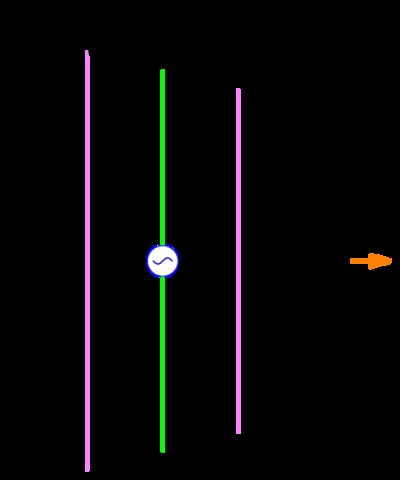Yagi - the man behind the antenna
Thursday, 15 August, 2013
The Yagi antenna can be found everywhere - land, sea and air. So who was the man who brought us this ubiquitous device?
A Yagi antenna is to radio what eggs are to bacon - virtually inseparable. The Yagi is so common that - apart from a single dipole or a long wire - it is the antenna of choice for a multitude of radio applications, from microwave links to digital television.
The technology is all down to Prof Hidetsugu Yagi and his assistant Shintaro Uda; more to Uda than Yagi, in fact, so strictly speaking the design should be known as the Uda antenna, or at least Yagi-Uda.
However, Yagi is the name that has stuck. Born in Japan in 1886, he graduated in engineering from Tokyo Imperial University in 1909. As a young engineer he went to Germany and worked under Heinrich Barkhausen, famous for discovering what is known as the Barkhausen effect - the magnetic domain theory of ferromagnetism and which is today used as an experiment in demonstrating the reality of magnetic domains.
While in Germany, Yagi was largely concerned with research into resonant transformers for radio systems, but his work was cut short by the outbreak of World War I, causing him to flee to Britain. Here he worked with John Fleming before going to Harvard University in the USA.
Returning to Japan in 1919, he was made a doctor of engineering and started teaching at Tohoku Imperial University where he worked with Shintaro Uda and others on the development of radio electronics. With financial support from a private foundation, the group began studying short-wave communications using directional antennas after it was realised that better radio links were needed between land and ships.
Birth of the Yagi antenna
In 1925 Yagi and Uda published details of a device they called a ‘wave projector’ or ‘wave canal’. It was a directional antenna they had developed at the university and it used several parasitic elements of directors and reflectors. The Yagi-Uda antenna was born.
The device was patented both in Japan and the US. In America the antenna revived interest in magnetrons and in 1928 GE developed a 400 MHz unit that was tested using a wave projector. Two years later, a Yagi-Uda antenna was used in an experimental aircraft landing system.

By 1933 Yagi had moved to Osaka Imperial University as the first chair of the physics department, where radar was being developed. He encouraged his students and colleagues to study pure science and fundamental physics while he looked after applied physics for industry. In the same year, a government radio telephone link was established over the 40-kilometre distance between Tobishima and Sakata.
At the outbreak of World War II, Yagi was made Dean of the Faculty of Science at Osaka University and remained a civilian consultant to the military on radar and communications until 1945. In that year he became president of the Technology Institute of the Cabinet.
With the war over, Yagi became a consultant on the technical rehabilitation of Japan and helped to establish television standards. Further honours came his way when he was installed as fourth president of Osaka University; he also was president of the Japan Amateur Radio League and was president of the Yagi Antenna Co.
A simple antenna design
The simplicity of the antenna has always been one of its greatest attractions, and it is particularly effective at VHF and UHF frequencies where its physical size can be quite small. Although its characteristics are narrowband, it is a high gain device - often 10 dB or more.
It is also highly directional, comprising, in its simplest form, one driven element of a dipole or folded dipole plus a parasitic director in front and a reflector behind. (The reflector is normally about 5% longer than the dipole while the director is shorter than the driven element.) From this simple configuration multiple directors and reflectors can be added to create a highly ‘personalised’ directional, narrowband antenna.

The relationship between physical size such as element length, the diameter of the elements and the spacing of the reflector(s) and director(s) can significantly alter the antenna’s impedance and gain, such that finetuning is often necessary for maximum performance.
Yagi antenna systems first came into widespread use during World War II but, ironically, not in Japan. The development of radar, particularly airborne versions, had stimulated their adoption in Europe and the USA. However, in Japan, rivalry between the army and navy prevented an awareness of the antenna until very late in the war, even though the army knew of the device after the fall of Singapore in 1942.
It’s fair to say that the Yagi-Uda antenna revolutionised radio and has become the most widely used antenna system, especially at higher frequencies. Hidetsugu Yagi, who died in 1976 as he approached his 90th birthday, would have been proud of his legacy.
2025–26 Thought Leaders: Tim Karamitos
Tim Karamitos from Ericsson discusses the connectivity requirements of emergency services and...
2025–26 Thought Leaders: Ruth Tovo
Comms Connect panellist Ruth Tovo, from the South Australian SES, discusses the technical...
ARCIA update: celebrating excellence in our industry
The ARCIA Annual Gala Dinner and Excellence Awards took place during the same week as Comms...




